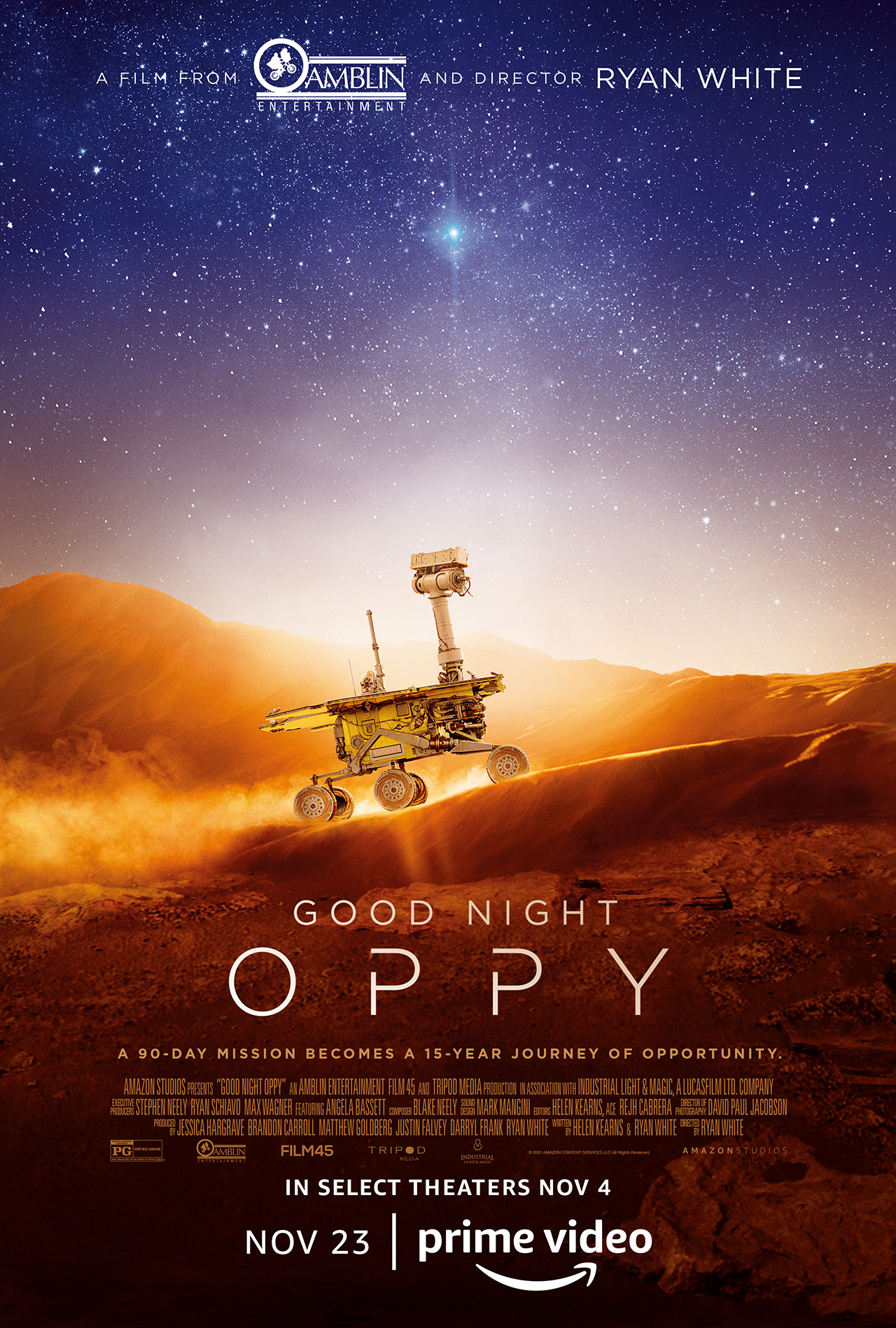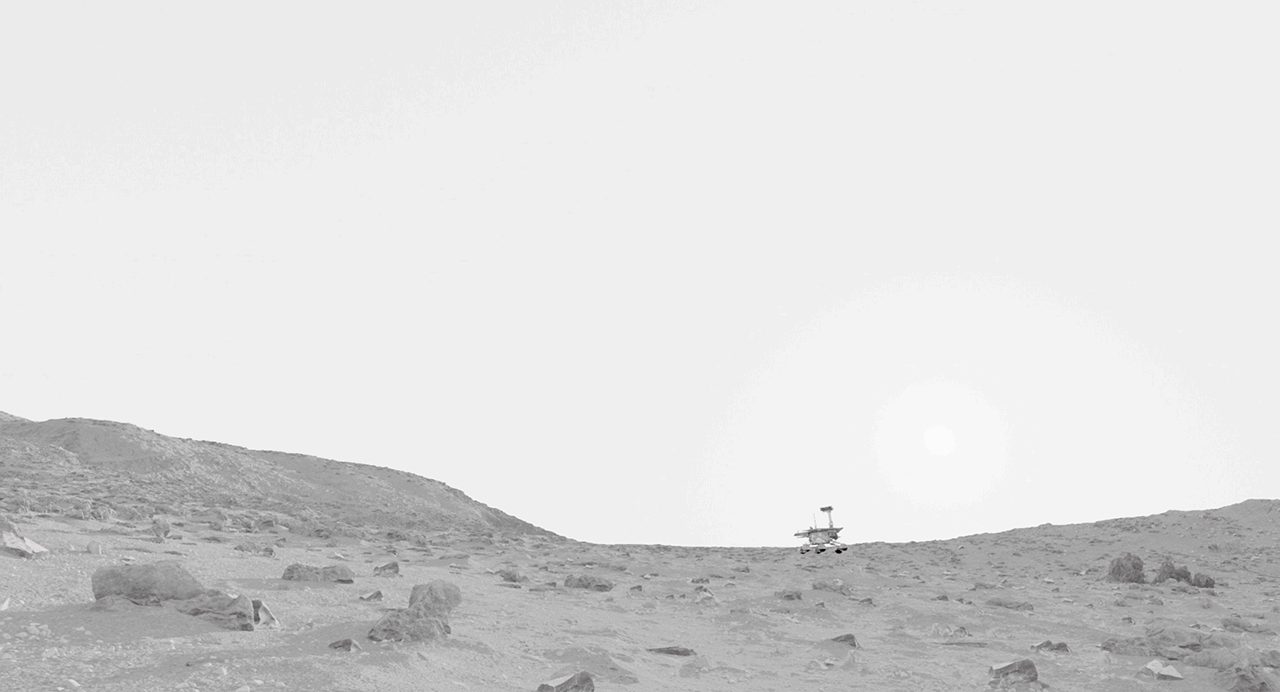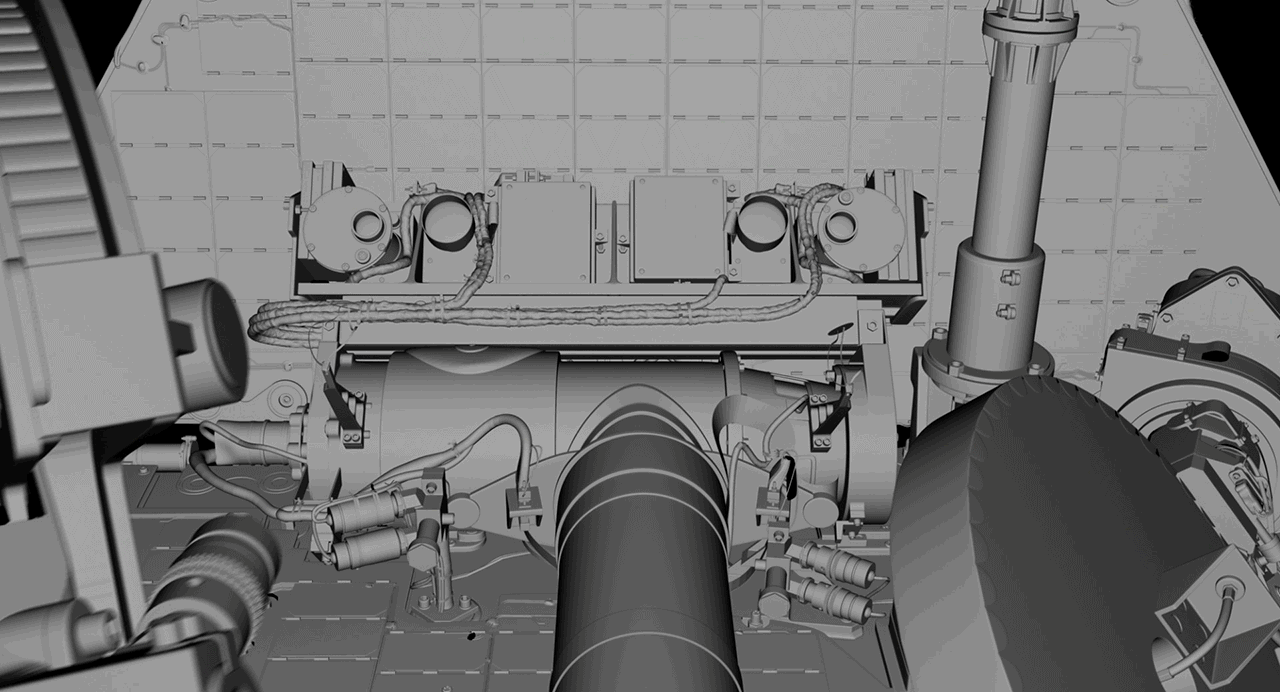'Good Night Oppy' explores human side of robotic rover's life on Mars
"The beauty and the pain of Opportunity's story is that the beginning, the middle and the end had already happened."

Ryan White did not set out to make a tearjerker.
Yet audiences watching the director's new documentary, "Good Night Oppy," now streaming on Amazon Prime Video, may want to have tissues ready.
"Not a chance in hell did I think this would be as emotional as the final film is," White said in an interview with collectSPACE.com. "It was an amazing pitch from Film 45, which is Pete Burke's company, and Amblin, which is Steven Spielberg's company, asking if I wanted to direct a documentary about a robot that was supposed to live for 90 days but survived for 15 years. That definitely intrigued me as someone who has always loved space, followed Opportunity's and Spirit's missions from afar and had always wanted to make a space film but felt like I had never found the right story."
Related: These are the last photos NASA's Opportunity rover took on Mars
"I knew this was a great premise for a film, but I had no idea what I referred to as the 'human beings.' I had no idea what the human beings that would be a part of telling this story would be like until we began the film," White said.
Therein lies why a film about a six-wheeled robotic rover sent to Mars is incredibly human. By introducing just a handful of the people who made Opportunity's (and its shorter-lived twin, Spirit's) journey possible, White shows audiences why even robotic space exploration is an extension of the human spirit.
"It was quite cathartic to see so many people have so many of the same emotions that I did," said Doug Ellison, who began at NASA's Jet Propulsion Laboratory (JPL) in California working on visualization projects but then moved into mission operations and was the engineering camera payload uplink lead for Opportunity. "There are several of us who are in this [film] and we have spoken about it since we have all seen it and we have described it as kind of the emotional closure that some of us perhaps needed."
Breaking space news, the latest updates on rocket launches, skywatching events and more!
"Ryan and his team came along and produced this love story to the team, the project and the rover," Ellison said. "I think now we can finally say — having had the story told this way — I think we're actually done now. I think we're actually done."
collectSPACE spoke with White and Ellison about making "Good Night Oppy." This interview has been edited for length and clarity.
collectSPACE (cS): What makes Opportunity's story unique that it deserved its own film?
Ryan White: I have had some people come up after screenings and say, "I love Spirit. Why isn't her name in the title?" And I'm like, it's just a title and it's a great one. We tried different versions with both robots [in the title] and it just didn't have the ring to it. But definitely the documentary is about both rovers, it's just that Opportunity had almost double the lifetime of Spirit and when you're thinking about the running time of a film, that would be the second half of the film.
So I have loved after screenings people coming up and saying, "I'm Team Spirit," or "I relate to Spirit much more," or "I'm Team Oppy." I think that's one of the brilliant things about this mission, as people saw themselves in these rovers, even the people that worked on them.
Jennifer Trosper, who was Spirit's mission manager, she says in our film that at the end of Spirit's mission she liked to think that Spirit was like her. That she was scrappy and that she had to problem solve. Jennifer was a young engineer in the late '90s working on the Pathfinder mission when there weren't a lot of women there at the time and she didn't have it easy. And Spirit didn't have it easy either. So she projected those obstacles that she had to go through in her life onto the rover that she managed.
So I think the film is about about both rovers, it's just Opportunity's lifetime is that much longer that it's a little more of a focus.
cS: Why do you think we anthropomorphize our rovers? We don't seem to do that with other space probes. You don't see people referring to Voyager or Pioneer as living characters. You don't even see it happen with other nations' rovers, like with China's rovers on the moon or Mars. Why do NASA's rovers have personalities?
Doug Ellison: I think with Spirit and Opportunity that there are two things that really play into it. One is that [principal investigator] Steve Squyres and [the lead scientist for the rovers' color imaging system] Jim Bell decided from the very outset that every picture they ever took was going to be online, so that anyone could follow along and be a part of this adventure. And that built this community of people taking every step alongside those rovers the whole way. You really do feel like you're invested in it, like you start caring about it.
And I think just by just good fortune, Spirit and Opportunity were both uniquely sized, uniquely capable to have very human-like dimensions and human-like vision. So it's only natural that we ended up feeling like there was a little piece of us right inside these robots as they were on these expeditions.
cS: Industrial Light & Magic (ILM) of "Stars Wars" fame produced the animations for "Good Night Oppy." As you have a history of working with visualizations, what does ILM's involvement add to the film?
Ellison: I got introduced to a couple of the folks from ILM who were working on this pretty early on and I had the great pleasure of getting on Zoom calls with them and walking them through where all this awesome data is — every single bit of this data is online for anyone to look at — and so I was showing them where the best archival images were, where the imagery was from Mars Reconnaissance Orbiter and where the the elevation models were.
I knew roughly the kind of stuff they might care about and the sort of challenges they might face, so I was trying to bring them to the data so that they could use it. And I think we all had an idea of what ILM might be able to do given this kind of project, but I don't think any of us expected it to be quite this spectacular. There are very, very few creative liberties taken. Most of what you're seeing is straight up Mars Reconnaissance Orbiter or Spirit or Opportunity directly and they've done a gorgeous job of making what was in some cases pretty rough data work on the big screen. It's absolutely extraordinary.
cS: Ryan, how much did you have to hold ILM to staying authentic to the data or were they as engaged in keeping it as real as possible as well?
White: Well, that was the pitch to ILM from the very beginning. We wanted to take the audience to Mars. We have all of the photography and data that Doug is referencing, but can they take that and make it look photo real? Because if they couldn't, we didn't want to make a cartoon. This isn't a kids' film. We are documentary filmmakers. We wanted this to be rooted in authenticity. And they said they had never done it before, but they were capable of doing just that and would love the challenge. That was the beginning of a two-year-long collaboration.
So like everything in filmmaking, there's a lot of trust you have to place in your creative collaborators, across all fields, whether it was my composer or my editors or sound designer. In this case, it was the visual effects and it wasn't until the very end of making this film that we actually got to see the fully rendered shots and see this beautiful Mars come to life. They totally knocked it out of the park.
The visual effects are one of my favorite things in the film because I was never sure whether ILM could execute them in the way that they said they could until the very end.
cS: So is there a sequel in the works? Maybe "Good morning Percy" or the like?
White: The beauty and the pain of Opportunity's story is that the beginning, the middle and the end had already happened.
When you're a documentary filmmaker, at least my type of documentaries, I do what I do, I love my job, because I am normally following something unfolding. It's a very unpredictable way of living. You never know when your story will be over. You are at the mercy of the story. So if I could go to Mars and be documenting the Perseverance rover right now, I would be there. That would be the normal type of filmmaking I do. But I can't do that.
If I'm going to tell a story about something on another planet, I have to wait until enough of that story has happened such that there is a beginning and a middle and probably at least an end coming. Otherwise I can end up making a 50- to 60-year-long documentary, which maybe we will do with Perseverance, who knows?
The beauty and the pain of Opportunity's story was that it had all just ended. I would have normally said no to making a documentary where the story had ended, except NASA was giving us this archive of almost a thousand hours of footage, which started at the beginning. So even though the story has already ended, we could start at the beginning and make the audience feel like they were in 1998. We could make the audience feel like they were in 2003.
Then we had the analyst's notebook, which is what Angela Bassett reads in the film, which we colloquially refer to as the "rover diaries." Those were written in the moment on the day that a crisis was happening or some incredible scientific discovery was being made. We had that to keep the audience in the story.
And lastly we had Industrial Light & Magic, which would hopefully put the audience on Mars as the journey was unfolding.
So I have no sequel in the plans yet, because there would need to be another story where I felt like we were near the payoff, and hopefully Curiosity and Perseverance are still just at the beginning or midpoint and not nearing that yet.
Follow collectSPACE.com on Facebook and on Twitter at @collectSPACE. Copyright 2022 collectSPACE.com. All rights reserved.

Robert Pearlman is a space historian, journalist and the founder and editor of collectSPACE.com, a daily news publication and community devoted to space history with a particular focus on how and where space exploration intersects with pop culture. Pearlman is also a contributing writer for Space.com and co-author of "Space Stations: The Art, Science, and Reality of Working in Space” published by Smithsonian Books in 2018.
In 2009, he was inducted into the U.S. Space Camp Hall of Fame in Huntsville, Alabama. In 2021, he was honored by the American Astronautical Society with the Ordway Award for Sustained Excellence in Spaceflight History. In 2023, the National Space Club Florida Committee recognized Pearlman with the Kolcum News and Communications Award for excellence in telling the space story along the Space Coast and throughout the world.




